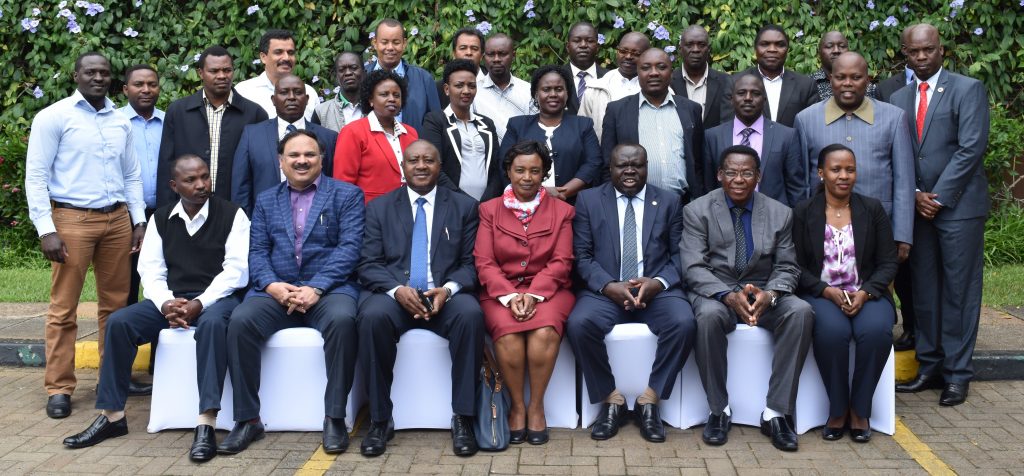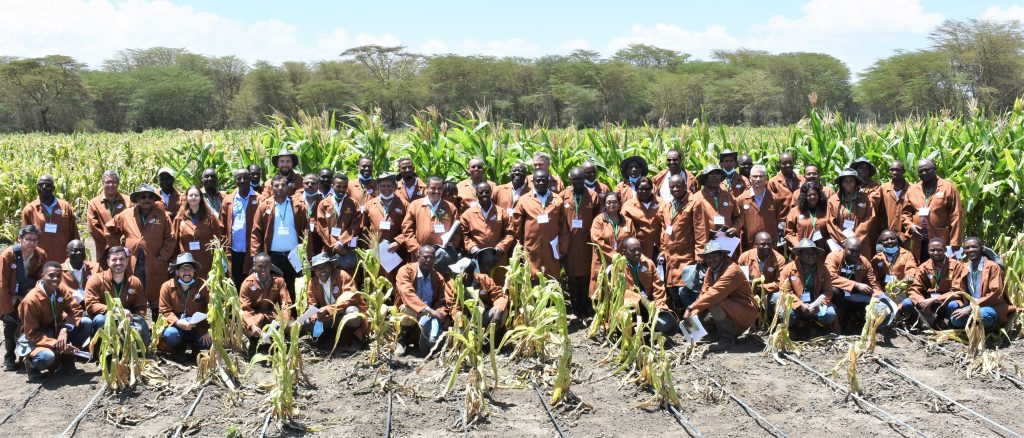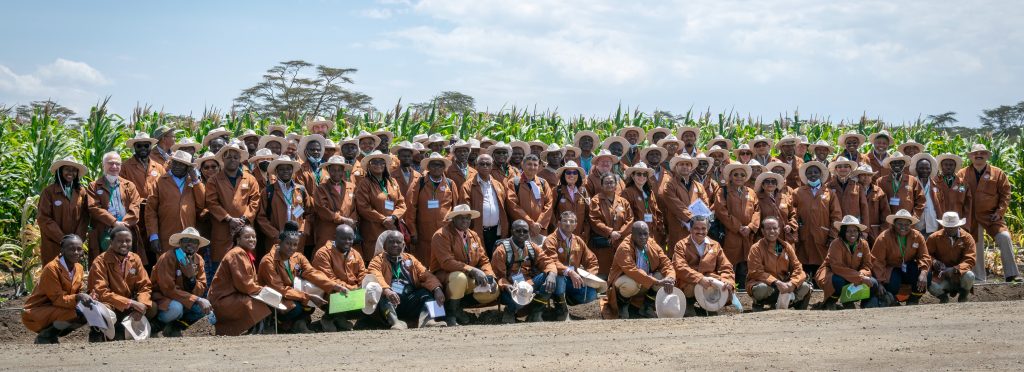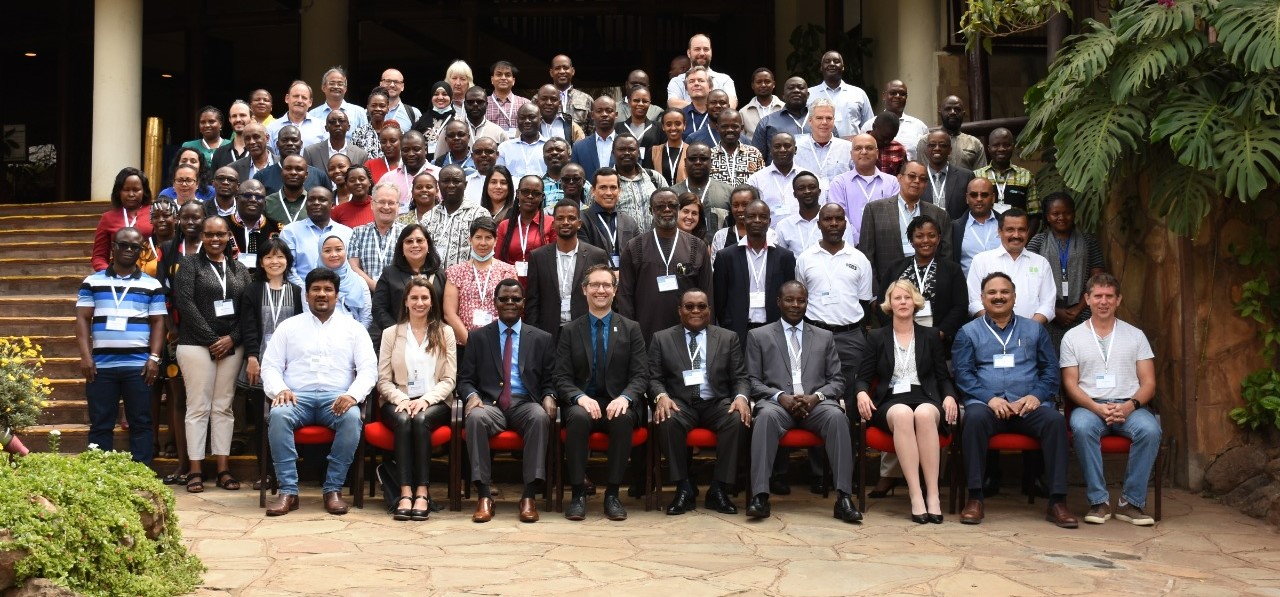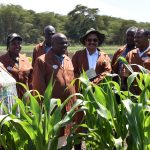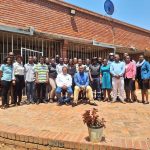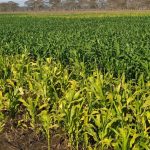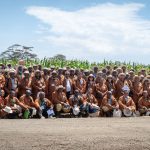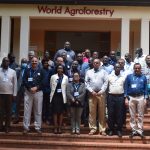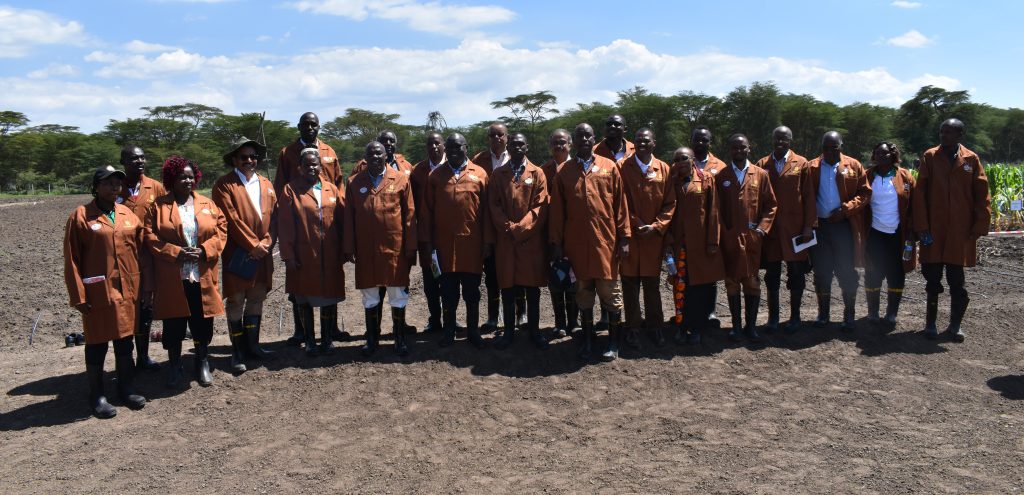
- Dr. Paul Ronoh, Principal Secretary, State Department for Agriculture, Kenya, and MITT team visiting MLN screening facility
- MLN Screening facility, Naivasha, Kenya -2019
- IMIC Partners participating in MLN field day - 2019
- Global Leadership team - Limagrain seeds company visiting MLN screening facility - 2019
- Dr.BÄNZIGER, Marianne and the team visit to MLN Screening facility, Naivasha, Kenya
- MLN Diagnostics & Mgt and MLN Epidemiology projects meeting, Nairobi, Kenya -2019
- EAC-CIMMYT meeting on MLN in Nairobi, Kenya, 2018
- IMIC field day 2022
- AGG Field Day 2022
- PHI Inception meeting - 2022 at Nairobi, Kenya
- Training to KALRO Seed production Managers, Breeders and Staff on MLN disease-free seed production
- Africa Plant Breeding Academy Students - 2022 Visiting MLN Screening Facility
- Visitors from USAID on 28th Oct, 2023 to MLN screening facility at Naivasha, Kenya
- MLN Gene Editing Meeting, Nairobi, Kenya
- Leadership team from University of Maryland, USA visiting MLN Screening facility, Naivasha on 3rd Nov, 2023
- PHI Workshop during 2023, Nairobi, Kenya
Latest Updates
- Kenya Seed Company takes strides against Maize Lethal Necrosis (MLN) in Bomet County
Aluoch Marion and Dr. Suresh, L.M.: In a significant effort aimed at enhancing agricultural productivity and combating the Maize Lethal Necrosis (MLN), the Kenya Seed Company officially opened its office in Bomet County. During the inauguration, a new MLN-tolerant maize variety was also unveiled, marking a crucial step toward providing certified disease-free seeds to farmers in the region. The event, held at Bomet on January 16th, brought together representatives from a number of technical institutions, including National Cereals and Produce Board (NCPB), Kenya Plant Health Inspectorate Service (KEPHIS), Kenya Agricultural and Livestock Research Organization (KALRO), Pest Control Products Board (PCPB), New Kenya Cooperative Creameries (KCC), Agricultural Development Corporation (ADC), International Centre of Insect Physiology and Ecology (ICIPE), and CIMMYT. Notable guests included Agriculture Cabinet Secretary Mithika Linturi, Principal Secretary for Agriculture Paul Rono, local leaders, farmers, and officials from both national and county levels of government. Their collective expertise was ...
- Combatting maize lethal necrosis in Zimbabwe
CIMMYT leads training sessions to equip stakeholders with tools to identify and mitigate the effects of MLN. By Kudzanai Chimhanda Maize is a staple crop in Zimbabwe, playing a vital role in the country’s agricultural landscape as food for its own people and an export good. However, behind every successful maize harvest lies the quality of seed and resistance to diseases and stresses. Amidst the multitude of diseases that threaten maize crops, one adversary is maize lethal necrosis (MLN). Though not native to Zimbabwe, it is crucial to remain prepared for its potential impact on food security. What is maize lethal necrosis? MLN is a viral disease, caused by a combination of two virus diseases. The disease emerged in Kenya in 2011 and quickly spread to other countries in eastern Africa. The introduction of MLN to Africa was likely affected by the movement of infected seed and insect vectors. MLN has had a severe impact on ...
- Ten years later: CIMMYT facilities in East Africa continue to make a difference
A decade of maize impact, celebrating 10 years of success with CIMMYT's maize DH and MLN screening facilities. By John BakumNovember 30, 2023 CIMMYT and partners in Kenya recently marked the 10th anniversary of two major facilities that have been crucial for maize breeding in sub-Saharan Africa. The Maize Doubled-Haploid (DH) facility and the Maize Lethal Necrosis (MLN) screening facility at the Kenya Agriculture and Livestock Research Organization (KALRO) centers in Naivasha and Kiboko, respectively, have made immense contributions to the rapid development of higher-yielding, climate-resilient and disease-resistant maize varieties for smallholder farmers across the continent. An aerial photo of the Naivasha Research Center. (Photo: CIMMYT) “These two facilities have been instrumental in furthering KALRO’s mission to utilize technology in the service of Kenya’s smallholder farmers,” said KALRO Director General/CEO, Eliud Kireger. “They also exhibit the spirit of cooperation and collaboration that is necessary for us to meet all the challenges to our food systems.” “Deploying ...
- Screening cycle for deadly MLN virus set to begin in Kenya during October, 2023
By Dr. Suresh, L.M.: The maize lethal necrosis (MLN) artificial inoculation screening site in Naivasha, Kenya will begin its next phenotyping (screening/ indexing) cycle 2023 at the beginning of October 2023, interested organizations from both the private and public sectors are invited to send maize germplasm for screening. In 2013, the International Maize and Wheat Improvement Center (CIMMYT) and the Kenya Agricultural & Livestock Research Organization (KALRO) jointly established the MLN screening facility at the KALRO Naivasha research station in Kenya’s Rift Valley with support from the Bill & Melinda Gates Foundation and the Syngenta Foundation for Sustainable Agriculture. MLN was first discovered in Kenya in 2011 and quickly spread to other parts of eastern Africa; the disease causes premature plant death and unfilled, poorly formed maize cobs, and can lead to up to 100 percent yield loss in farmers’ fields. CIMMYT and its partners are dedicated to stopping the spread of this deadly maize disease by effectively managing the risk of MLN ...
- Screening cycle for deadly MLN virus set to begin in Kenya during April, 2023
By Dr. Suresh, L.M.: The maize lethal necrosis (MLN) artificial inoculation screening site in Naivasha, Kenya will begin its next phenotyping (screening/ indexing) cycle 2023 at the beginning of April 2023, interested organizations from both the private and public sectors are invited to send maize germplasm for screening. In 2013, the International Maize and Wheat Improvement Center (CIMMYT) and the Kenya Agricultural & Livestock Research Organization (KALRO) jointly established the MLN screening facility at the KALRO Naivasha research station in Kenya’s Rift Valley with support from the Bill & Melinda Gates Foundation and the Syngenta Foundation for Sustainable Agriculture. MLN was first discovered in Kenya in 2011 and quickly spread to other parts of eastern Africa; the disease causes premature plant death and unfilled, poorly formed maize cobs, and can lead to up to 100 percent yield loss in farmers’ fields. CIMMYT and its partners are dedicated to stopping the spread of this deadly maize disease by ...
- African Researchers Team Up To Control Pests And Diseases
By Wangari Ndirangu (11th Nov 2022): Scientists from the East and South African region have mooted a collaborative approach to contain the challenges posed by pests and diseases in food production. The experts who are working on an Integrated Pest and Disease Management packages to address the recent invasion of Fall Army Worms (FAW) menace called on the need to develop and scale up proper technologies to assist farmers avert losses. Scientists from the East and South African region during a workshop at the World Agroforestry Centre on Maize Integrated Pest and Disease Management packages. The Scientists under the Plant Health Initiative have been working on eco-friendly pest management technology to tame the spread of fall armyworm such as combined approaches like the use of resistant varieties, bio pesticides and related biological control methods that are affordable and environmentally friendly. Speaking during a workshop on maize Integrated Pest and Disease Management (IPDM), Dr. ...






